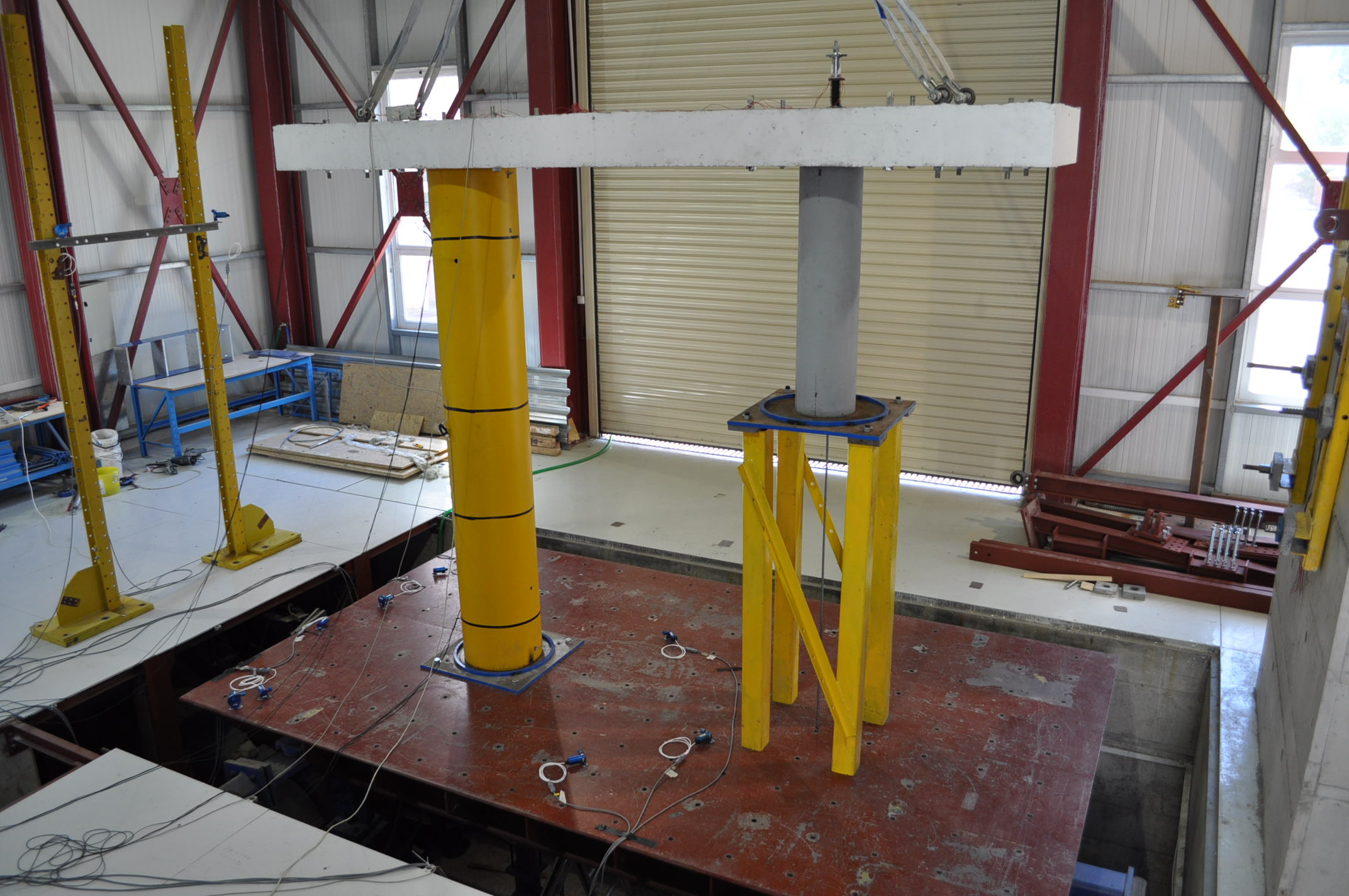Project SEISMO-ROCK-BRIDGE
Project implemented under the ARISTEIA Action of the “Operational Programme for Education and Lifelong Learning” and is co-funded by the European Social Fund (ESF) and National Resources of Greece.
Research Team:
- Nicos Makris (nmakris@upatras.gr), Principal Investigator
- Stathis Bousias (sbousias@upatras.gr)
- Dimitris Karabalis (karabali@upatras.gr)
- Dr Haris Alexakis (alexakis@upatras.gr)
- Dr Georgios Kampas (geekampas@gmail.com)
- Dr Elias Strepelias (ilstrepelias@upatras.gr)
- Christos Kolonas, PhD candidate (xkolonas@upatras.gr)
- Eleni Katsanou, PhD candidate
- Adreas Papalabrou, technical staff
- George-Kostantinos Theofanopoulos, technical staff
Structural redundancy (indeterminacy) and the increasing resistance of structures as deformation increases (positive stiffness) are deeply rooted concepts in modern structural engineering. These design concepts lead in several occasions to the attraction of large seismic forces and even when a ductile structure can accommodate large deformations it may end up with appreciable permanent displacements; therefore, the need for re-centering. On the other hand, ancient, free-standing temples which have survived the test of time are articulated structures (mechanisms) which exhibit negative stiffness. The remarkable seismic stability of ancient free-standing, rocking monuments is partly due to a size-frequency scale effect that renders large, free-standing, rocking structures most stable; and partly because the heavier the freely supported cap-beam atop the columns is (epistyles with frieze atop) the more stable is the rocking frame regardless the rise of the center of gravity due to the cap-beam.
In view of the appreciable damage to the hinge zones and the resulting permanent lateral displacements which are inherent to the current seismic resistant, ductile design practice, during the last decade there has been a growing effort to direct the attention of bridge engineers to the advantages associated with allowing bridge piers to uplift or, more generally, to rotate intentionally at specific “plastic hinge” locations by mobilizing a lower failure mechanism. At the same time, the existing cast-in-place, monolithic paradigm in modern bridge construction is gradually being replaced by precast components; while, the accelerated bridge construction technology is receiving wide acceptance worldwide.
This action is an in-depth investigation that builds upon the ample post-uplift seismic resistance of tall, free-standing rocking structures and aims to establish rocking isolation as an economical and sustainable seismic protection strategy for modern bridges. In order for the proposed approach to be implementable, several theoretical and practical challenges have been addressed:
- Using analytical (mainly variational methods), experimental and computational tools, the dynamic (earthquake) response of free-standing and vertically restrained rocking frames has been investigated in depth, and the advantages and limitations of rocking isolation versus the widely accepted base (shear) isolation have been assessed. The research concludes that rocking isolation systems do not resonate with ground shaking and have the advantage of re-centering (no permanent displacements), while the horizontal displacements of the deck may be reduced with the use of vertical restrainers.
- The in-plane and out-of-plane response of the free-standing rocking frame has been studied separately, and the results from the analysis were found to be in remarkable good agreement with the experimental results. The response of the frame where the piers have different size and height has been also considered. The research confirms experimentally the theoretical prediction that – as concerning the planar rocking motion – an array of free-standing columns capped with a rigid beam forms a four-hinge mechanism that is a more stable configuration than the solitary column with the same size and slenderness, regardless of the rise of the center of gravity of the system. In contrary, during the out-of-plane motion, the rocking mechanism is similar to the one-hinging mechanism of the solitary column, where now the additional mass of the deck reduces appreciably the stability of the system and the contribution of vertical restrainers to improve the response becomes significant.
- Practical issues regarding the design and implementation of rocking isolation have been addressed, such as the optimum detailing of the bridge-piers at their base and at their head where the pivoting and impact happens, or the repercussions of rocking and impact to the flexural response of the deck during rocking motion and how the dynamics of the deck due to flexure affects the overall bridge response. The research concludes that the presence of steel plates at the base and the head of the bridge-pier where impact happens improves the dynamic response, while reduces the possibility of crushing in the neighborhood of the pivot points during rocking motion.
- Reliable methods of analysis and design have been developed such as nearly-rigorous methods based on advanced numerical tools that have been calibrated from the experimental studies or simplified engineering methods, based on ready to use response/design curves (i.e. rocking spectra).
The action has supported the research of 3 PhD students and 3 post-doctoral researchers. The original contributions and findings of the project have been published in peer-reviewed archival journals (12 papers), in conference proceedings (5 papers) and books (2 chapters).
Report Series in Earthquake Engineering: Download here
Videos from tests
In plane response: Download here
Out-of-plane response: Download here
Unequal pier heights: Download here




